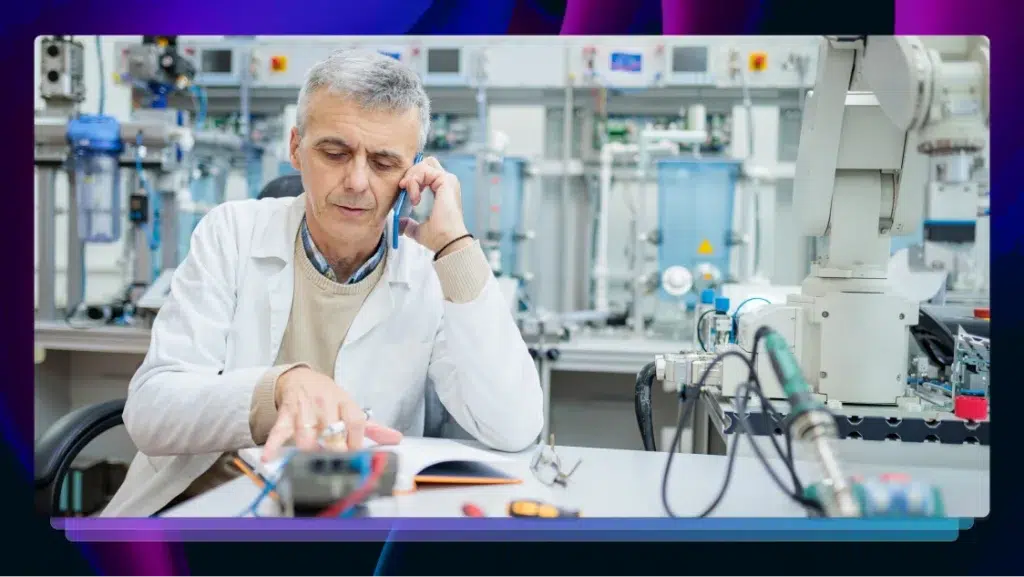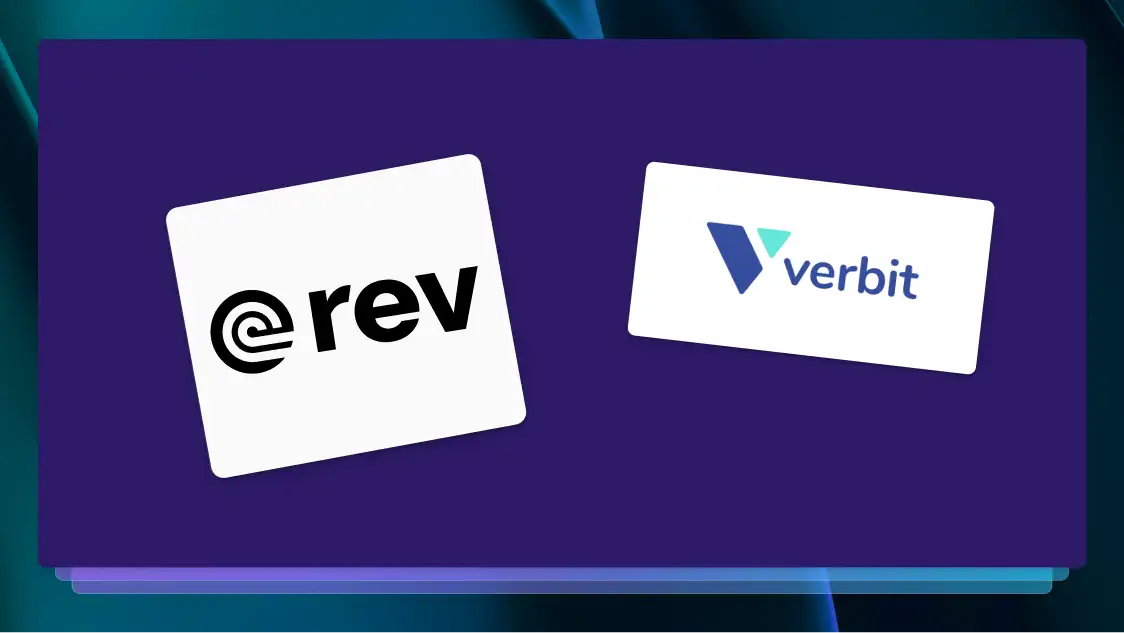What is Natural Language Processing (NLP)? Why Should You Care?
What is natural language processing (NLP)? NLP is a subset of AI that gives computers the ability to read and process human language

“ChatGPT, write a press release about my brand.”
“ChatGPT, make up a story about two dogs, three cats, and an electric car.”
“ChatGPT, what’s the best editing software?”
It sure seems like you can prompt the internet’s foremost AI chatbot, ChatGPT, to do or learn anything. It can answer any question. It can create art based on your prompts. It can write code. And following in the footsteps of predecessors like Siri and Alexa, it can even tell you a joke.
But with ChatGPT, the thing to marvel at isn’t so much that it can answer your questions and queries; it’s that the results seem so…human. It speaks and writes and understands like we do. How is that possible? The answer is natural language processing. But what is natural language processing? You could ask ChatGPT, or you can read on.
What Is Natural Language Processing?
Natural language processing, or NLP, is a subset of artificial intelligence (AI) that gives computers the ability to read and process human language as it is spoken and written. By harnessing the combined power of computer science and linguistics, scientists can create systems capable of processing, analyzing, and extracting meaning from text and speech.
Whereas our most common AI assistants have used NLP mostly to understand your verbal queries, the technology has evolved to do virtually everything you can do without physical arms and legs. From translating text in real time to giving detailed instructions for writing a script to actually writing the script for you, NLP makes the possibilities of AI endless.
But NLP isn’t exactly new.
The History of Machine Learning for Language Processing
Believe it or not, NLP technology has existed in some form for over 70 years. In the early 1950s, Georgetown University and IBM successfully attempted to translate more than 60 Russian sentences into English. Only, they trained a machine to do it. NL processing has gotten better ever since, which is why you can now ask Google “how to Gritty” and get a step-by-step answer.
Thanks to modern computing power, advances in data science, and access to large amounts of data, NLP models are continuing to evolve, growing more accurate and applicable to human lives. NLP technology is so prevalent in modern society that we often either take it for granted or don’t even recognize it when we use it. Your digital assistant, sure. But everything from your email filters to your text editor uses natural language processing AI.
How Does Natural Language Processing Work?
NLP is powered by AI. To put it another way, it’s machine learning that processes speech and text data just like it would any other kind of data.
These machine learning systems are “trained” by being fed reams of training data until they can automatically extract, classify, and label different pieces of speech or text and make predictions about what comes next. The more data these NLP algorithms receive, the more accurate their analysis and output will be.
NLP tasks separate language into shorter, fundamental pieces. These basic tasks make it easier for the AI to learn.
Tokenization
Tokenization is the first step in natural language processing. It entails breaking down a string of words into smaller units called “tokens.”
Here’s an example: What is natural language programming? = “What” “is” “natural” “language” “programming” “?”
Part-of-Speech Tagging
Part-of-speech tagging is the process of assigning a part-of-speech category (noun, verb, adjective, conjunction, etc.) to each token. So, if we take the previous example above, it would look like this:
“I”: PRONOUN, “really”: ADVERB, “love”: VERB, “this”: DEMONSTRATIVE, “song”: NOUN, “!”: PUNCTUATION, SENTENCE CLOSER

Breaking down the sentence and assigning speech tags helps the machine understand the relationships between individual words and enables it to make assumptions about semantics.
Lemmatization and Stemming
Lemmatization and stemming are text normalization tasks that help prepare text, words, and documents for further processing and analysis. According to Stanford University, the goal of stemming and lemmatization is to reduce inflectional forms and sometimes derivationally related forms of a word to a common base form. To boil it down further, stemming and lemmatization make it so that a computer (AI) can understand all forms of a word.
For instance:
- am, are, is → be
- car, cars, car’s, cars’ → car
This text mapping will produce a result like this:
The boy’s cars are different colors → the boy car be differ color
Since words have so many different grammatical forms, NLP uses lemmatization and stemming to reduce words to their root form, making them easier to understand and process.
Stopword Removal
Stopword removal is the process of removing common words from text so that only unique terms offering the most information are left. It’s essential to remove high-frequency words that offer little semantic value to the text (words like “the,” “to,” “a,” “at,” etc.) because leaving them in will only muddle the analysis.
Word Sense Disambiguation
Word sense disambiguation is the process of determining the meaning of a word, or the “sense,” based on how that word is used in a particular context. Although we rarely think about how the meaning of a word can change completely depending on how it’s used, it’s an absolute must in NLP.
For example, take the word “bass,” a word with three very different “senses”:
“She can play the bass very well.”
“Can you turn down the bass in your stereo? It’s shaking the car.”
“I caught a bass while fishing today.”
People know that the first sentence refers to a musical instrument, while the second refers to a low-frequency output. Meanwhile, the third refers to a fish. NLP algorithms can decipher the difference between the three and eventually infer meaning based on training data.
Text Classification
Text classification assigns predefined categories (or “tags”) to unstructured text according to its content. Text classification is particularly useful for sentiment analysis and spam detection, but it can also be used to identify the theme or topic of a text passage. It’s also used to detect the native language of a text.
For instance, this passage:
Pero ¿qué son las herramientas de creación de contenidos? Son las herramientas que le ayudan a presentar su marca, producto o personalidad a su audiencia. Herramientas de marketing en redes sociales. Aplicaciones de marketing digital. Herramientas de redacción de contenidos. Si te ayudan a contar tu historia, son herramientas que necesitas.
Text classification makes it so that AI would automatically recognize that it was written in Spanish. In English, it reads:
But what are content creation tools? They are the tools that help you present your brand, product, or personality to your audience. Social media marketing tools. Digital marketing applications. Content writing tools. If they help you tell your story, they are tools you need
With text classification, an AI would automatically understand the passage in any language and then be able to summarize it based on its theme.
Sentiment Analysis
Sentiment analysis is a natural language processing technique used to determine whether the language is positive, negative, or neutral. For example, if a piece of text mentions a brand, NLP algorithms can determine how many mentions were positive and how many were negative.
Pros and Cons of NLPs
Natural language processing AI can make life very easy, but it’s not without flaws. There will always be risks involved with AI. Machine learning for language processing still relies largely on what data humans input into it, but if that data is true, the results can make our digital lives much easier by allowing AI to work efficiently with humans, and vice-versa.
Pros
The pros of this new tech are plentiful, including:
- Helps humans communicate with machines without coding or learning a programming language
- Processes great amounts of data very quickly
- Enables everyday tools like chatbots, search engines, and spam filters
- Has evolved to be able to produce actual art based on human queries
Cons
There are some cons to NLPs, though, that are important to be aware of. These include:
- How it comes to a conclusion can be difficult to understand and, therefore, trust
- NLPs are trained by the data they receive, which means that if the data is corrupt or biased, they can be as well
- As it becomes more common, NLPs can be misused or used by humans in place of actual human learning
How Is NLP Used in Real Life?
NLP is used in real life almost every time you log into the internet. That search engine you have bookmarked? NLP. The tech that sends your junk email into a separate folder? NLP. The site you use to find out the Spanish word for “translation?” Yep, it uses NLP. NLP and AI may be trending, but they are also a part of life now.
Here are some of the more common ways NLPs are used in real life:
- Spam filters. Your email server is likely using an NLP right now!
- Search engines. You know how you can type “How come Tesla door stuck” and get a legitimate answer? That’s an NLP!
- Customer service automation. As much as we hate that automated voice when we call the bank or internet provider, it’s as efficient as it is thanks to NLP.
- Chatbots. ChatGPT is the current full realization of NLP tech (learn more with our post on chatbot statistics).
- Digital assistants. While not as advanced as ChatGPT, its predecessors like Siri, Alexa, and Google are in our lives virtually every minute of every day.
NLP is Here to Stay, and We’re Better For It
What is nlp? It’s a technology that powers a huge chunk of our lives. If you have a phone, an email address, or a computer, you’re probably working with NL processing in some fashion every day. Some of us use it even more than that!
Here at Rev, our automated transcription service is powered by NLP in the form of our automatic speech recognition. This service is fast, accurate, and affordable, thanks to over three million hours of training data from the most diverse collection of voices in the world. Let it make your life easier, too.















